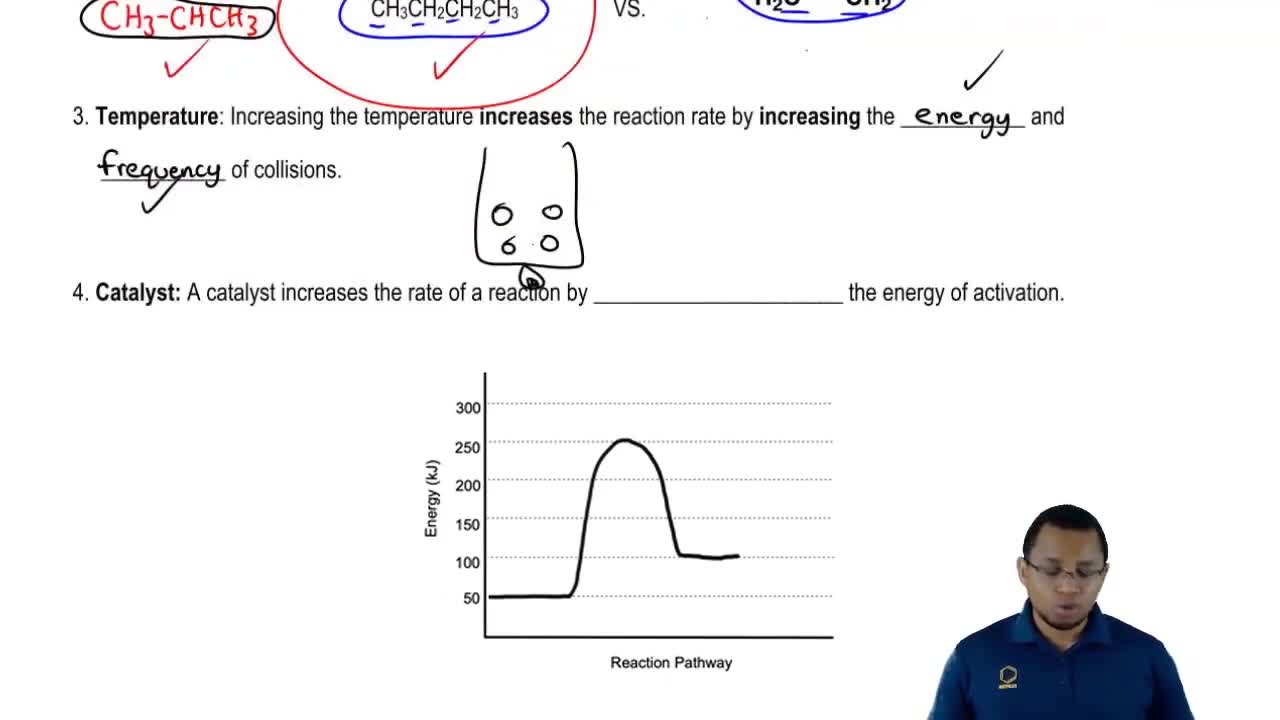Trypsin, a peptidase that hydrolyzes polypeptides, functions in the small intestine at an optimum pH of 7.7 to 8.0. How is the rate of a trypsin-catalyzed reaction affected by each of the following conditions?
a. changing the pH to 3.0
 Verified step by step guidance
Verified step by step guidance Verified video answer for a similar problem:
Verified video answer for a similar problem:



 1:6m
1:6mMaster Factors Affecting Enzyme Activity Concept 1 with a bite sized video explanation from Jules
Start learning